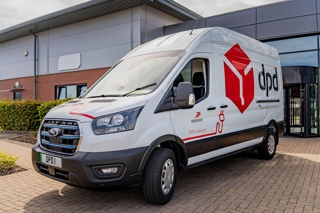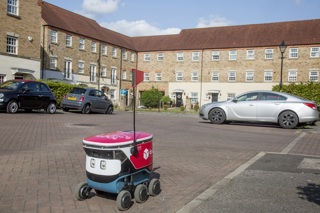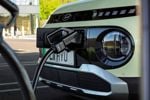DPD will spend £330 million to build seven new distribution centres over the next two years that will include charging facilities to cater for its growing electric fleet.
The investment in the seven 60,000 sq ft facilities will see the firm deliver the 50th new build distribution centre as part of an ongoing programme to strengthen its nationwide network of 80-plus regional parcel centres.
Work will begin on new DPD distribution centres in Crawley and Darlington this year, Cambridge, Bradford, Guildford, Milton Keynes and Sittingbourne in 2026 with all seven facilities operational by early 2027.
The giant new fully automated sortation facilities will each be capable of processing up to 80,000 parcels a day, with capacity to accommodate over 100 new delivery driver routes to ensure the operation can handle the demand for DPD's services in each area with space to carry on growing for a number of years.
Each location is optimised in terms of transport links to ensure the most efficient operation possible with DPD's increasingly electric van fleet and will include EV charging facilities.
The new facilities will also create a significant number of new jobs in a range of roles including drivers, admin, operations and warehousing.
Tim Jones, director of marketing, communications and sustainability at DPDgroup UK, said: “With 38% of our delivery van fleet already electric, these facilities will be served by increasing numbers of electric vehicles, making them more sustainable operations, and helping us move towards our net zero targets.”
DPD is deploying a range of zero-emission solutions as part of a holistic decarbonisation strategy, led by an acceleration of its electric van transition plan.
In April, it revealed that it was conducting on-the-road trials of an electric heavy goods vehicle (eHGV) from MAN, with the aim of introducing heavy-duty electric trucks later this year.
Russell Olive, director at charging management software company Vaylens, said: “DPD’s continued investment highlights the growing momentum behind fleet electrification. But getting from 38% to 100% electric requires a clear, data-driven roadmap.
“For many operators large or small, the real challenge lies in understanding which vehicles are ready to transition, what infrastructure is needed to support them, and how to tackle complex fleet segments, as well as the low hanging fruit. It's not just about having the right infrastructure and software.
“A holistic approach to map, model, and manage the transition is key.”























Login to comment
Comments
No comments have been made yet.